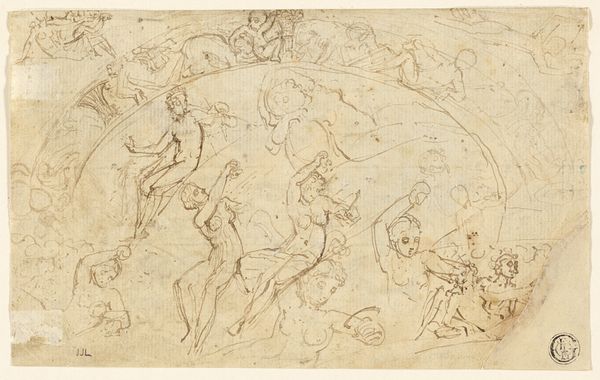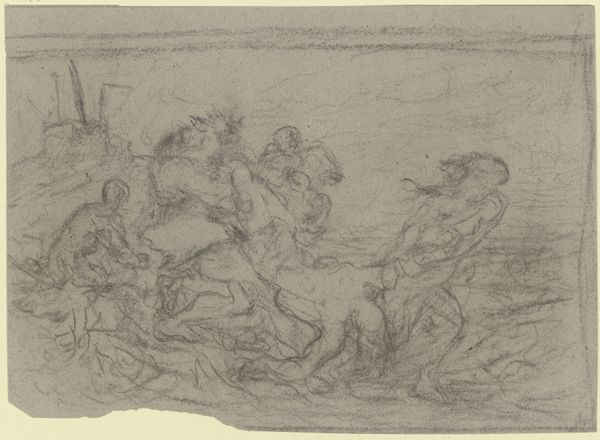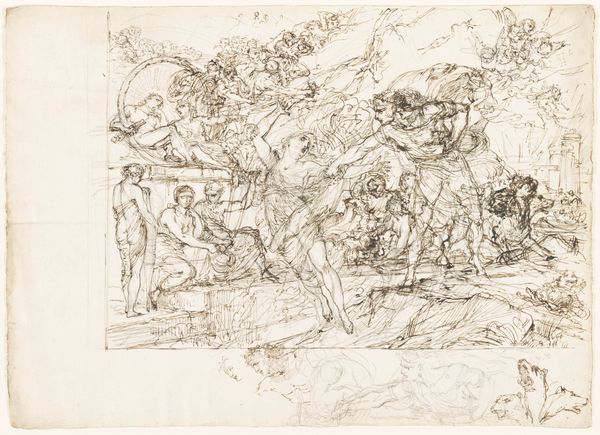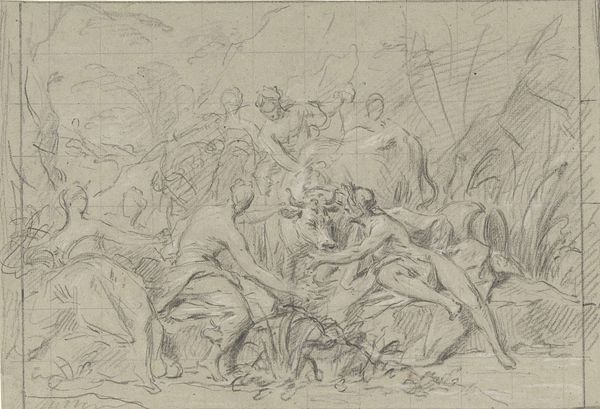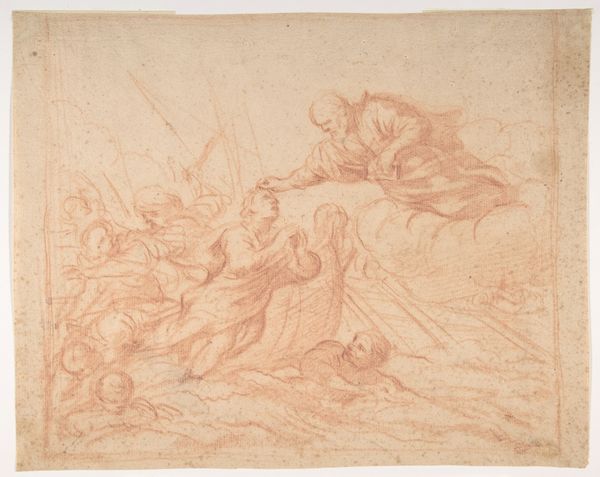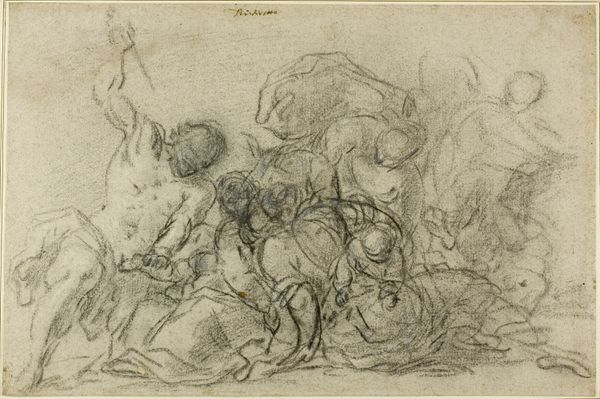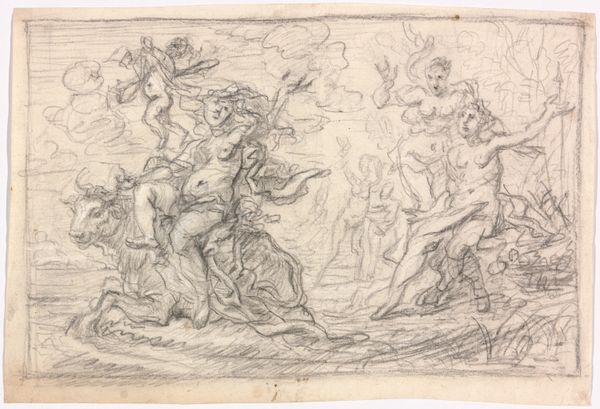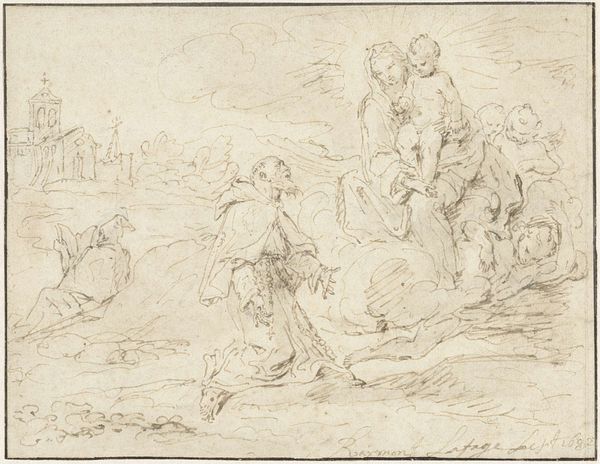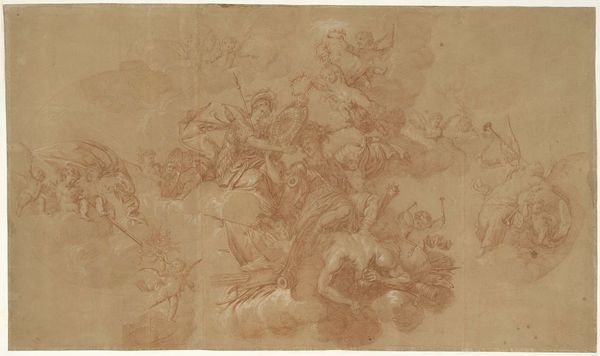
drawing, chalk
#
drawing
#
ink drawing
#
baroque
#
pen sketch
#
pencil sketch
#
figuration
#
chalk
#
line
#
history-painting
Dimensions: height 226 mm, width 312 mm
Copyright: Rijks Museum: Open Domain
Curator: This sketch, currently residing here at the Rijksmuseum, is titled "The Calling of a Christian Knight," attributed to Simone Cantarini, dating from between 1622 and 1648. It appears to be rendered in chalk and ink. What are your initial thoughts? Editor: Well, my first impression is of swirling dynamism. It's very dramatic, all these figures sketched in red chalk emerging, or perhaps falling, amidst cloudy forms. There's a real sense of Baroque movement. Curator: Precisely. And that's where Cantarini’s mastery comes into play. Beyond the pure aesthetics, though, this historical scene, almost operatic, points towards a larger symbolic tradition, doesn’t it? A moment of divine intervention shaping a man's purpose. Editor: It certainly presents a classic narrative of religious conversion. You've got your earthly realm populated by figures who seem to be in torment, contrasted with the celestial intervention from above. Makes you think about how the church used art to instruct about the righteous path. Do you read those figures below as demons? Curator: Potentially, but more broadly, I see them as representing earthly struggles, temptations, perhaps even a lack of spiritual clarity. It's interesting to me how the haloed figures above—almost prototypes for guardian angels—are visually connected to the knight by these strong diagonals of implied force. What power they carry! Editor: Thinking about the context of its creation, the Catholic Church was in the business of recruiting ideological soldiers at the time. The Council of Trent emphasized sacred art for this purpose. Perhaps this sketch acted as propaganda? Curator: Quite possibly! But beyond simple propaganda, it serves a deeper, perhaps even unconscious need. To this day we long for validation that our actions serve a higher good. That sense of divinely-appointed purpose still resonates culturally. Editor: Indeed. Regardless of its specific intent or societal context, I admire how the artwork encapsulates human beings in states of receiving heavenly direction. Curator: Well said. Thank you, truly food for thought. Editor: Thank you, I now want to dig deeper into this work, knowing the cultural, historical context it presents and embodies.
Comments
No comments
Be the first to comment and join the conversation on the ultimate creative platform.
